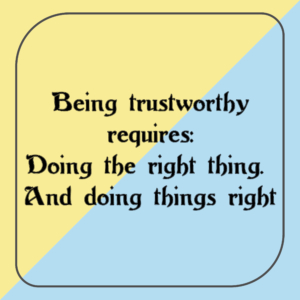In Blogging for Business, Answer the Question: “Compared to What?”
Always “reading around” for background materials for this Say It For You blog, I learned two different startling statistics about the travel industry. First, at a recent networking meeting, I heard from presenter Gloria Thomas of Eight Streams Wealth that travel represents $9.25 trillion worth of business here in the U.S. Then from reading Tourism Review News, I learned that tourism has generated 20% of total world employment since 2013. Conclusion: Travel is a big, big deal.
Same message, just in different words? Yes and no.
Both presentations offered attention-commanding statistics. From Tourism Review, I learned that, in a single year, there are 1.4 billion international arrivals registered across the globe and that fully 20% of the jobs generated worldwide between 2025-2019 were in travel and tourism.
What lent Gloria Thomas’ presentation extra “oomph”, in my opinion, was the “compared to what?” element. That $9.25 trillion in U.S. travel business? Our oil & gas industry generates $330 billion. Our auto industry? $500 billion. Hollywood? A “mere” $300 billion.
It’s been a long-held belief of mine: nothing speaks quite as loud as numbers, which is why, in teaching how to create content for blog posts, I stress the power of using statistics. Real numbers dispel false impressions people have about an industry and can be used to demonstrate the extent of a problem before you set about showing how you help solve that problem. From a customer acquisition standpoint, statistics relate to the theory of social proof – humans are more willing to do something other people are already doing.
The thing about numbers, though, is they’re tricky. Statistics are a valuable form of information, to be sure, and, as my friend Gloria proved, answering the “compared to what?” question invests those statistics with more power. But in blog marketing, I’ve come to realize, there’s even more needed. For every statistic about the company or about one of its products or services, even with the addition of comparisons, the content writers needs to address every reader’s unspoken question – So, is that good for me (compared to what I am doing or using now)?
Bottom line: The raw ingredients of blogging for business need to be “converted” into relational, emotional terms that compel reaction – and action. In describing your products, your services, your business credo, don’t forget to answer the question: Compared to what??






Follow us online!